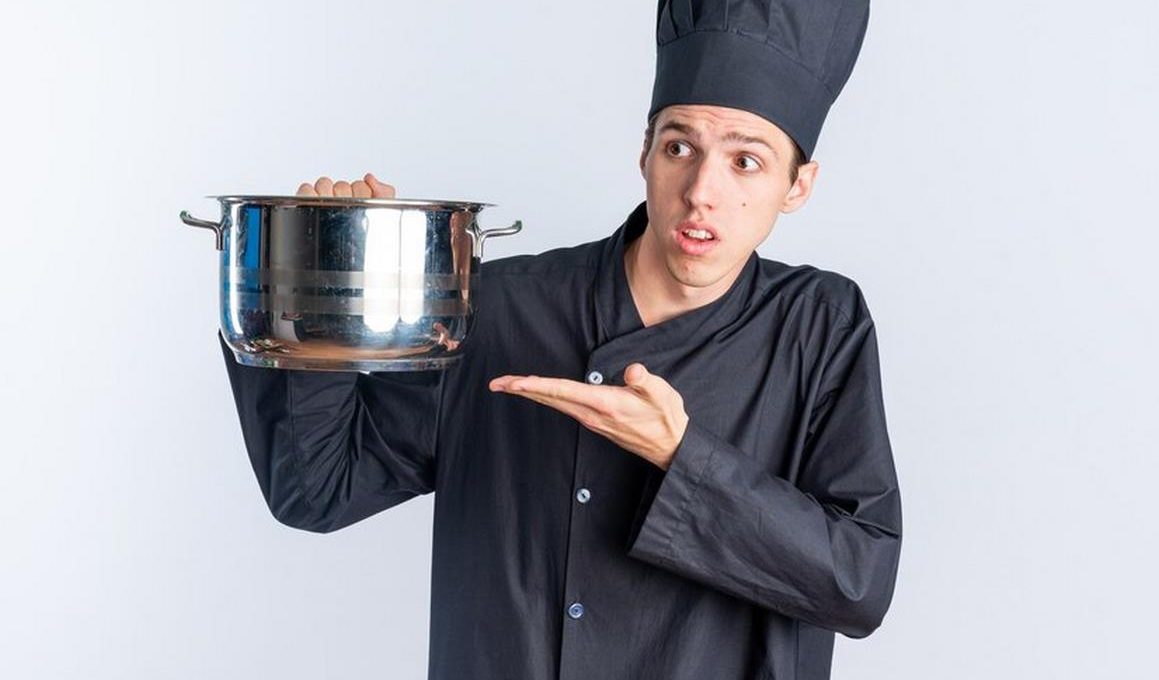If you want to cook a crispy and tender 700g pork loin joint, you have come to the right place. In this article, you will learn how to prepare, cook, and rest this joint. You will also learn how to use a meat thermometer. The first step in the process is to prepare the meat. Then, you’ll need to prepare the sauce. Once that’s done, you’ll need to carve the meat into slabs. To make the sauce, you can add some fresh sage leaves.
Recipe
There are several ways to cook a 700g pork loin joint. To ensure the meat is cooked to perfection, you should cook it in the oven. To achieve the best results, cook the meat to a temperature of around 180-160 degC or two-and-a-half-degrees cooler in the fan. After cooking, allow the joint to stand for about 10 minutes before carving. During this time, the internal temperature should remain at a steady 75-80 degC, or 80-85degC if it is well-done.
To ensure your pork is cooked perfectly, make sure that it is at room temperature before putting it in the oven. For a fan-assisted oven, heat the oven to 210 degC; for a conventional one, preheat it to 220degC. Before placing the pork joint in the oven, scald it in boiling water. After it has rested for a few minutes, add the onion, apple and herbs. Make sure to sprinkle the crackling with extra salt before placing it in the oven.
You should remove the pork loin from the refrigerator at least thirty minutes before roasting it. Mix the oil, garlic, rosemary, and thyme with salt and pepper to form a paste. Rub the seasoning paste all over the pork loin. Next, place the meat on a rack in a shallow roasting pan. Place an oven-safe meat thermometer into the joint and set it to 135 degrees F. Once the meat has reached this temperature, it’s ready to be carved.
Preparation
Pork loin can be bought frozen or home frozen. If frozen, a rindless joint should be removed from the freezer at least half an hour before cooking. The meat should be at room temperature before cooking, then rubbed dry and lightly covered in salt. Once cooked, the joint should be allowed to rest for about 15 minutes before carving. A meat thermometer should read 75-80degC for medium or 80-85degC for well done.
Pork loins vary in thickness, so take care when selecting yours. Some are chunky while others are slender. The thickness and girth of your joint will affect the cooking time. Thicker loins may develop crackling before cooking. Be sure to loosely cover crackling to avoid overcooking. To prepare a 700g pork loin joint for roasting, prepare the following ingredients.
First, prepare your pan. Place a rack inside a shallow roasting pan and add a tablespoon of oil to the rack. Combine the garlic and salt with enough oil to cover the pork loin completely. Rub the pork loin with the seasoning paste. Then, place the rack in the roasting pan. Insert a digital meat thermometer and make sure that the internal temperature reaches 135°F.
Cooking time
If you want to cook a roast beef, the temperature should be at least 240C/220Fan/gas 9. Place the roast beef in a roasting tin and cook for at least 30 minutes per 500g or 1 lb. Once cooked, allow the meat to rest for at least 15 minutes before carving. Check that the meat is piping hot throughout and has no pink colour. Serve with your favourite gravy.
For a perfect roast, you need to prepare the joint in advance. You can either pound it dry with a meat pounder or use a large tin. In either case, you should ensure the meat is room temperature before you place it in the oven. Preheat the oven to 210degC for a fan assisted oven, or 220degC for a conventional oven. After the joint has reached room temperature, scald it with boiling water. You can also place the joint in a roasting tray with deep sides and handles. Season it with extra salt to prevent it from sticking to the roasting tray.
When cooking a pork loin joint, you should keep in mind that it should be cooked until the internal temperature is 145degF or 60degC. However, some home cooks prefer to take it out of the oven before the meat reaches 145degF because the residual heat from the roast will cause the internal temperature to rise. The final result will depend on how thick your pork loin is and its fat content.
Meat thermometer
A meat thermometer can be an invaluable tool when cooking a roast. You can use it to check that the joint is cooked through by inserting the probe into the centre of the joint. The internal temperature should reach 65C and the probe should rise slightly before it registers as cooked. When the meat is fully cooked, it will be firm and juicy. For this reason, you should allow the joint to rest for at least 10 minutes before carving.
The first step in cooking a pork loin is to know the internal temperature. You want the meat to be mostly white with a pink center. You will be able to get an accurate reading with a meat thermometer if you know how to use it properly. To test the temperature, make sure that you insert the probe as close to the center as possible. Once the thermometer registers a temperature of 65-70C, the meat is ready to serve.
Once the meat is at the correct temperature, you can begin cooking the roast. You should use a roasting tin slightly larger than the joint. If you use a large tin, you risk evaporating the gravy. You may also want to add a peeled onion to the roasting tin while the pork is cooking to provide extra flavour to the gravy. You can also add fresh herbs such as thyme, sage, or apple to the roasting tray. Finally, make sure to sprinkle some salt over the crackling before you cook the pork.
Resting time
Whether you’re making a delicious roast dinner or simply want a succulent roast, you’ll want to make sure you allow your pork to rest before carving it. Resting time allows the meat’s juices to settle back into the meat, making it more tender and juicy. After roasting, leave the pork to rest for at least 20 minutes before carving, as well as enough time to make the gravy and finish the trimmings.
If you’re using a fan-assisted oven, rest the joint for at least 30 minutes before cooking it. If you’re using a conventional oven, rest it for about 40 minutes before cooking. This allows the fat to render. During the resting period, the joint should be brought to room temperature. For non-fan ovens, the temperature should be around 220degC. Preheat the oven to 220degC. Prepare a roasting tray with deep sides and handles. Sprinkle salt and pepper over the surface.
Before cooking, remove the joint from the fridge an hour before you’re ready to cook it. You’ll want to use a meat thermometer to make sure the joint is the correct temperature. If the crackling on the joint isn’t crisp, let it rest for another 10 minutes. This way, the meat will have enough time to relax and distribute its juices evenly. Let your roast rest for about 20 minutes before carving.
Using a tin
Using a roasting tin to cook a 700g pork loin joint is a simple way to roast a whole joint of pork. Before cooking it, the pork joint should be pounded dry and brought to room temperature. You should also use a fan assisted oven or 220degF/gas 5. If you have a tin with a non-fan oven, reduce the temperature to 210degC/170degF fan/gas 5. Once the joint is ready, place it on the wire rack and season with sea salt.
When cooking a pork loin in a tin, it is important to choose a roasting tin that is slightly larger than the joint. If you use a large tin, the gravy will evaporate as the meat cooks. While the pork is roasting, you can add a peeled and halved onion to the tin to enhance the flavour of the gravy. You can also add some chopped apple or sage. The crackling should be sprinkled with extra salt before cooking.
Depending on the thickness of your pork loin, it can take longer to cook than a smaller joint. It is important to remember that all pork loins are different. Some are chunky while others are slender. Therefore, the cooking time for a 700g joint depends on the thickness. If your pork loin is thick, you may notice crackling on the surface of the meat. If this happens, remove the crackling from the tin and leave it to cook separately.
Using a barbecue
If you have a barbecue, you can use it to prepare and cook a delicious and moist pork loin joint. First, you’ll need to brine the pork loin joint. You can do this by placing the pork loin in a bowl with some thyme, a sprig of thyme and a Bramley apple. Next, place the pork loin in the centre of a baking tray. Then, pour enough liquid to cover the base of the tray. Then, add the pork joint to the tray.
The pork loin is a perfect vehicle for adding flavor to your meals. It’s not super fatty and will develop a great flavor from the char and seasoning you use. While some people confuse the pork loin with the tenderloin, both meats are great for grilling and pan-frying. However, the loin should be understood as distinct from the pork tenderloin, which is cut from tissue on the upper side of the rib cage. Further, the loin can be cut into pork chops.
To prepare the meat, you need to pre-season the pork loin with salt and pepper before placing it on the barbecue. You can also use a meat thermometer to check the internal temperature of the roast. Ideally, it should be around 140deg F or 60degC. Some home cooks prefer to remove the pork before this temperature, as the residual heat will cause the internal temperature to rise.
Podobne tematy




